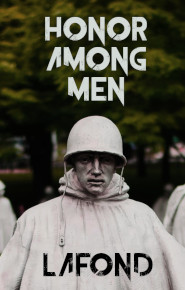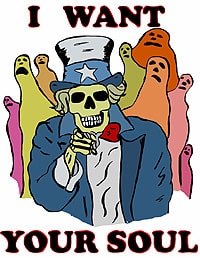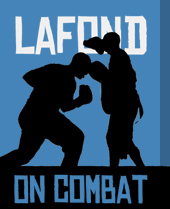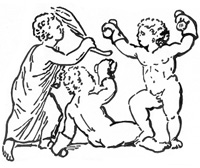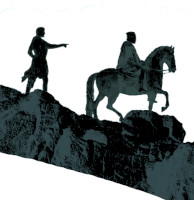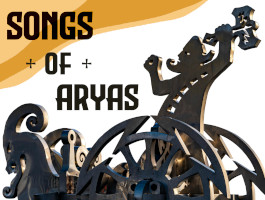This is a John Woo production so I knew it would be bloody and beautiful. This is about the Japanese occupation of the Wushe Mountains of Taiwan, and the resistance they met at the hands of the headhunters of the Wushe clans. There are a lot of similarities to this story and the story of the Spartan 300 at Thermopylae, down to the number of suicidal defenders. Also, like 300, Sediq Bale [True Warrior] is largely focused on warrior ethics.
For example, once ‘civilized’ by the Japanese occupiers, the women become internal spies against insurrection, and the men know to keep their plans secret. There are war songs which the men sing to their enemies while killing them, and to each other while on the move, with lines like:
“When you bleed the animosity between you and me no longer exists.”
“Only brave souls are allowed to enter [along the rainbow bridge].”
“The reddened earth is silent.”
“Your hatred darkens the heavens and earth.”
“I’ll show you the pride of savages.”
“Entrust your hatred to the clouds and mists.”
I can watch film depictions of aboriginal slaughter of civilized oppressors all day long. Give me Custer killed a dozen ways, and Lord Chelmsford skewered by a Zulu asagi all day long. I don’t really know what it is in me, but I have always ‘felt’, not thought, but ‘felt’ that any conqueror who is not just content to win, but must also socially engineer the conquered out of existence, deserves to be slaughtered to the last person. In my mind genocidal policies should be repaid in kind.
The depiction of the Japanese occupiers is well done and not without sympathy. The interesting thing is that the Japanese treatment of aboriginal people in Southeast Asia, Indonesia and Micronesia was conducted so much along European lines [except for the Japanese use of cannibalism as a supplement for troop rations] that this film depiction of it almost seems like a story of the American frontier.
A good example is child abuse. Child beating is an intricate part of Japanese and European acculturation, and until the 1980s was common in state run schools [I saw many child beatings and was myself beaten in the 1970s in Maryland and Pennsylvania schools]. This domestic and educational brutality has tended to shock aboriginal peoples who generally have no child-beating traditions. In this film the casual brutality of Japanese/European culture is shown as an underlying reason for the revolt by 6 clans of headhunters, who prove to be far less savage than the Japanese.
My favorite Japanese character is General Kamada Yahiko, who is a vein-popping heart-attack bound hothead of the first order, who refers to clan leader Mouna Rudo as “That old bastard!”
This is a heart-wrenching movie because you know, as is usual in war, that the more virtuous side is doomed to be crushed by the force that is closest to pure evil. Perhaps that is why these movies are so compelling; and why I will watch depiction after depiction of doomed revolts against inhumane oppression, because I am a slave to an all-powerful government just like Mouna Rudo was, but that I live in the time of hopelessness that he sought death to escape, that time when no man would be able to rise up as a warrior and say 'no' to the machine that owns him.
Sediq Bale is one of my all time favorite tribal suicide movies, a genre I am strangely drawn to.


